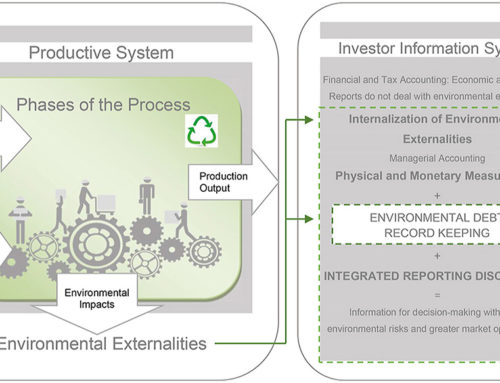First published in the Guardian, April 8th 2014
Many businesses struggle with the question of how to invest in large fixed assets. These are painstaking decisions, because they always demand long-term thinking and guessing about markets, future technologies and risk factors. How much revenue will a new factory generate? How much savings will a new technology produce? What unintended consequences might occur because of a purchase?
As companies attempt to answer these questions, they also have to deal with long-term trends that further complicate the question of fixed-asset purchases. Issues as diverse as globalization, environmental degradation and climate change can affect commodity prices, cause fires or floods, drive up the cost of living, and undermine political stability and security. And even positive developments, like the growing use of renewable energy, can lead to instability as coal producing areas will need new economic lifeblood. For governments hoping to deal with these trends by incentivizing green investment, one simple accounting change – accelerated depreciation for green infrastructure – could make a considerable difference.
Companies attempting to adjust to these changes with large fixed assets often find themselves trying to balance a financially viable long-term solution with a steep up-front cost. At the same time, companies also have to deal with several long-term issues that further complicate their purchasing decisions. I recounted one such story in my book,Environmental Debt: the Hidden Costs of a Changing Global Economy. Several years ago, PepsiCo built a state-of-the-art facility for its Frito-Lay division in Arizona. The installation had near net-zero waste, water, and energy systems. It isn’t hard to see how these advanced systems not only helped PepsiCo, but also the surrounding community: approaching net-zero water use would seem pretty valuable, actually imperative, in the middle of a water-constrained area like the American southwest.
Unfortunately, these engineering feats are actually disincentivized in our current accounting system because they are more expensive in the short term despite having huge long-term savings. However, there is a basic accounting solution that could fundamentally alter business fixed asset and technology profile, one that will make sense to engineers as well as CFOs and board finance committees: accelerated depreciation for green infrastructure investments.
Accelerated depreciation allows greater accounting and tax deductions in the earlier years of the life of an asset. In doing so, it enables a company to depreciate its fixed assets faster, so its earnings, balance sheets and tax bills would be calculated according to a truer value of these investments.
Microsoft is a good example of the potential value of accelerated depreciation for green infrastructure. Like its fellow IT companiesGoogle, Facebook and Apple, it wants to de-carbonize its business. Internally, it has already begun charging divisions for the carbon they use and rewarding them for the carbon they save; additionally, it has made a major wind investment.
Given its actions thus far, it seems likely that, if Microsoft were incentivized by accelerated depreciation, it would invest aggressively in renewable energy for its global data centers, just as its rival technology companies are doing. Under the current system, however, it is de-incentivized from making this sort of large-scale change.
Global accounting and business consortia like GRI, the Financial Accounting Standards Board and the B Team are all exploring the viability of new rules, but looking at the whole of our economic and environmental conundrum, we can become paralyzed by the enormity of the task. However, accelerated depreciation is a simple but exceedingly effective tool as we aim to create the 21st century business paradigm. It doesn’t require a team to spend a year calculating Life Cycle Analysis that is measured differently between industries, sectors, and countries – and occasionally, measured differently within industries, sectors and countries. Accelerated depreciation can, effectively, level the playing field so that the biggest polluter no longer makes the biggest profit, and every country and company benefits as well.
Accelerated depreciation could and should incentivize PepsiCo, and every other company with comparable breakthrough technology, to spend more today in order to save money, energy, waste and water in five years’ time. However, in order to de-carbonize the economy globally, the accelerated depreciation incentive has to work for the average struggling business on every continent. We cannot depend on goodwill, young entrepreneur/founders, or pioneer companies to make this right. Accounting rules are the basic guidelines for investment strategy and must begin to serve the laws and constraints of the natural world, as well as the bottom line.
Because of its effect on tax revenue, accelerated depreciation may seem like a costly solution for governments. However, any loss of short-term tax revenue would be offset by the billions of dollars governments would save from the preservation of healthy ecosystems and the lowering of climate change’s catastrophic risk profile. China, for example, has estimated that environmental degradation cost 3.5% of its GDP in 2010, and KPMG estimated that the 3,000 largest publicly traded corporations caused $2.15tn in environmental damage in 2008. We’re talking big money here.
Accelerated depreciation is a solution that the G20 can implement. We have a global climate and environmental emergency that is poised to destabilize the world’s economies and governments. Here is a relatively simple, uncomplicated solution. World leaders, unite! Do something constructive together on behalf of all the world’s peoples and businesses!





